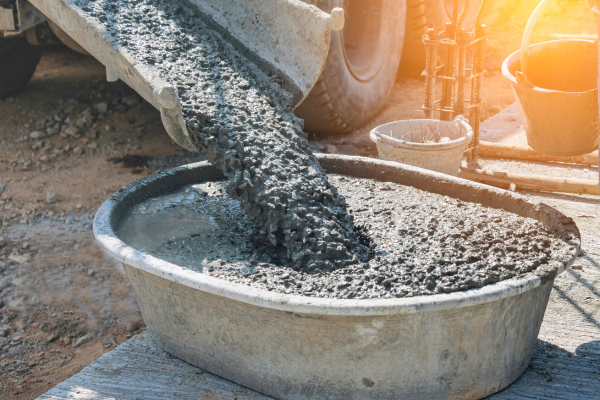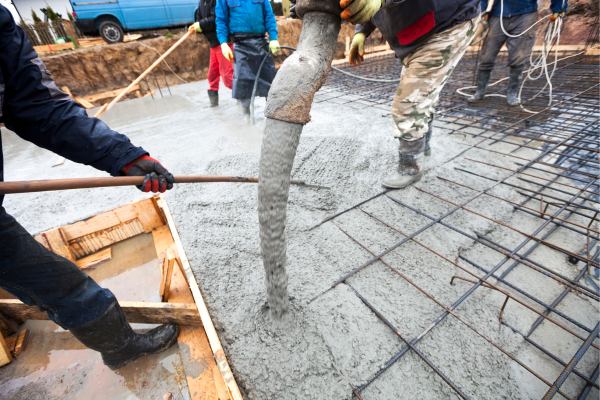.png)
Self-Healing Concrete: A Sustainable Future for Construction
Imagine a world where our buildings and roads fix themselves. Sounds like something out of a science fiction novel, right? Well, it's not as far off as you might think. Enter self-healing concrete – a game changer in the construction world. This isn't your average concrete. It's a smarter, tougher version that repairs its own cracks, big or small. Why does this matter? Because it means our infrastructure could last longer with less repair work. That's not just good for our wallets; it's great for the planet too.
Self-healing concrete is at the forefront of building a future where our cities are more sustainable and resilient. Think about it – bridges that mend themselves, roads that patch up their own potholes. The impact could be huge, cutting down on maintenance costs and making our urban spaces last longer. This blog is about unpacking this incredible technology, understanding how it works, and why it could be a cornerstone of cost-effective construction. Let's dive into the world of self-healing concrete and see how it's setting the stage for the future of construction.
Alright, let's break down how this cool self-healing concrete works. It's kind of like how our skin heals after a cut. There are two main ways this concrete gets its healing powers. First, there's the natural method where the concrete just fixes itself over time. This happens because when tiny cracks form, water gets in and starts a reaction with the concrete to heal the crack. It's like the concrete is alive!
Then, there's the high-tech way. Scientists add special ingredients to the concrete. These can be tiny capsules filled with healing agents or even bacteria that wake up when they touch water. When a crack forms and water seeps in, these capsules break open, and the healing agent inside gets to work, filling up the cracks. Or, in the case of bacteria, they start eating certain substances in the concrete and produce limestone, which fills the cracks. Cool, right?
This isn't just magic. It's science working to make buildings and roads that can take care of themselves a little, reducing the need for repairs. That means we can save money and also help the environment by reducing waste. This smart concrete is still being studied and improved, but it's already showing us a glimpse of a future where our cities could be much more sustainable and self-sustaining.

Imagine saving money every year because the city doesn't have to fix the same potholes or bridge cracks over and over again. That's one big win with self-healing concrete. Initially, this concrete might cost more to make because of the special stuff added to it. But think long-term. Buildings and roads won't need repairs as often, which means huge savings in maintenance costs. We're talking about a future where tax dollars stretch further and cities can spend more on new projects instead of fixing old ones.
Now, let's talk green – environmentally green. Traditional construction eats up a lot of resources and creates waste. Self-healing concrete changes the game. Fewer repairs mean less new material needed and less old material thrown away. It's like recycling built right into the buildings and roads. Plus, making concrete usually releases carbon dioxide, a greenhouse gas. If we're making and repairing less, we're also cutting down on those emissions.
This concrete isn't just a win for our wallets; it's a win for the planet. It's a step towards building a world that's not just smarter but also kinder to the environment. Reducing waste, saving energy, and cutting emissions are big deals in our fight against climate change. So, self-healing concrete could be a hero in both the economic and environmental stories of our future.
Self-healing concrete isn't just a cool idea; it's already making waves in real-world construction. For instance, imagine a bridge that can repair its own minor damages, extending its life and ensuring safety for everyone who crosses it. This isn't a dream; there are projects worldwide testing self-healing concrete's abilities to do just that. From highways in the Netherlands that are experimenting with these materials to reduce maintenance costs, to concrete structures in the UK designed to last longer with less repair work, the applications are vast and varied.
Then, there are the buildings equipped with self-healing concrete foundations that could potentially withstand cracks from natural settling or even minor earthquakes, healing themselves to prevent water damage and structural weakness. It's about creating infrastructure that's not just durable, but also adaptive to changes and challenges over time.
These case studies are not just proof of concept; they're a glimpse into a future where our urban environment is more resilient, safer, and more cost-effective. The economic benefits are clear: spend a bit more now on smart materials and save a lot on repairs later. Environmentally, it's a win too, with reduced need for new materials and lower emissions from repair work.
Self-healing concrete is stepping out of the lab and into the streets, proving its worth in the real world. It's an exciting time in construction, with innovation paving the way for smarter, more sustainable cities.
Even with all its promise, self-healing concrete faces some challenges. For starters, it's still more expensive than regular concrete. The special ingredients needed for self-healing add to the cost. Plus, figuring out the best mix for different climates and types of construction is tricky. It's not a one-size-fits-all solution yet.

But, here's the hopeful part: researchers are on it. They're experimenting with cheaper materials and tweaking the mix to make self-healing concrete work better and cost less. And as more projects use this concrete, we'll learn more about how it holds up over time, which can help improve it further.
Looking ahead, the future looks bright. Imagine cities filled with buildings and roads that heal themselves, lasting longer and requiring less maintenance. This could mean less traffic from construction, safer structures, and even more innovative designs. As technology advances, the dream of self-healing concrete becoming the standard in construction might just become a reality. It's a challenge, sure, but one that could change our world for the better.
Bringing self-healing concrete (SHC) into today’s building projects means thinking ahead and embracing innovation. It starts with the mix—adding those special self-healing ingredients to the concrete before it's poured. Builders and engineers need to know about this option and consider it for projects where longevity and low maintenance are key.
Training is crucial, too. Crews working with SHC need to understand how it's different and how to handle it correctly to get all the benefits. Plus, local building codes might need updates to welcome this new material. It's all about getting everyone on board, from architects designing with SHC in mind to city planners recognizing its long-term value.
It's a team effort to integrate SHC into construction practices. With a little bit of learning and some adjustments to the way things are done, SHC can start making our buildings and roads smarter, more durable, and more sustainable. It’s not just about using a new type of concrete; it’s about building a better future.
Self-healing concrete (SHC) is paving the way to a future where construction is more durable, sustainable, and cost-effective. As we embrace this innovation, the challenges it faces today are stepping stones to widespread adoption. The path forward is clear: integrating SHC into our buildings and infrastructure promises a world where repairs are fewer and our structures are smarter.
Ready to build the future with less maintenance and more sustainability? Dive into the world of self-healing concrete. Whether you're an architect, builder, or city planner, it's time to explore how SHC can transform your next project. Let's innovate together for smarter, longer-lasting construction. Join us in leading the charge towards a more resilient tomorrow.